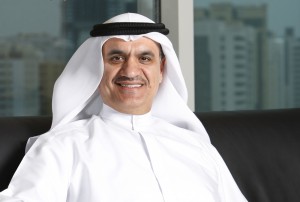The GSMA marked the start of the World Radiocommunication Conference 2015 (WRC-15) by calling on governments across the world to allocate the spectrum required to drive continued global growth of mobile broadband. At the treaty negotiations hosted by the International Telecommunication Union (ITU), each country has a role to play by identifying additional globally harmonised spectrum to support next generation mobile services.
Worldwide demand for mobile data is growing exponentially. According to Cisco, global mobile data traffic will grow 10-fold from 2014 to 2019. As data traffic surges, networks will face a capacity crunch and spectrum is a critical element for ensuring continued high quality mobile communication.
“WRC-15 represents a turning point for the future of mobile. Governments have a unique opportunity to ensure we have the spectrum necessary to drive digital inclusion and foster a robust mobile economy over the coming decade,” said Alex Sinclair, acting director general and CTO, GSMA. “The time to act is now. As it can take up to 10 years from international identification of spectrum to network deployment, decisions made at WRC-15 will determine the availability of affordable, ubiquitous, high-speed mobile broadband services for years to come.”
The mobile industry is already making a profound contribution to economic growth and employment worldwide. In 2014 alone, mobile contributed US$3 trillion to the world’s economy, equivalent to 3.8% of global GDP. In the next five years, this is projected to increase to US$3.9 trillion, or 4.2% of expected GDP, with the mobile industry supporting 28.7 million jobs. Future progress hinges on governments working with the mobile industry to provide a regulatory environment that encourages investment and innovation.
Based on ITU estimates, GSMA operator members agree that 600-800MHz of additional spectrum needs to be identified globally for mobile broadband to meet projected consumer demand by 2020. It is critical that WRC-15 identify several new globally harmonised bands, ensuring a good mix of coverage and capacity characteristics and driving down prices through economies of scale. The GSMA is pleased that WRC-15 is expected to move the 700MHz band from a regional to a globally harmonised band as ITU Region 1 (Europe, Middle East and Africa) appears set to agree to identify this band, alongside the existing identification in the Americas and Asia Pacific.
There is also nearly unanimous consensus for new globally harmonised spectrum for mobile in the L-band, starting at 1427MHz, as well as growing momentum for allocating a portion of the C-band, starting at 3.4GHz. The GSMA continues to call for increased support for a mobile allocation in the sub-700MHz UHF band, which already has strong support from a number of large markets in North and South America and the Middle East. Historically used for terrestrial TV broadcasting, this band could be freed up for mobile services and has excellent geographic coverage capabilities to meet increasing mobile data demand, especially for rural communities.

Ahmad Abdulkarim Julfar, CEO, Etisalat Group said, “The consequence of failing to secure enough spectrum for IMT at this WRC will inevitably result in materially limiting the availability and affordability of high capacity mobile broadband services to consumers. Failure to identify sufficient spectrum for IMT now will result in an inability for the mobile industry to meet the infrastructure objectives of National Broadband Plans; it will lead to increased capital expenditure – not just in the cost of acquiring unnecessarily scarce spectrum resources but also due to the potential lack of lower frequency bands, more dense networks, and the need to maintain end-user expectations of superior quality of service.”
At WRC-15, governments will balance the spectrum needs of industries such as mobile, broadcast and satellite in the next ten years and beyond. By supporting a co-primary mobile allocation in key spectrum bands, each country will have the flexibility to determine how to allocate spectrum in the future, ensuring consumers can continue to choose how they access the services they want.






